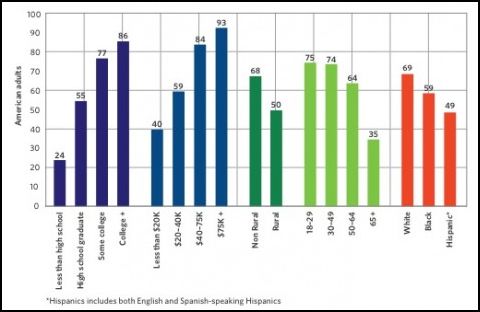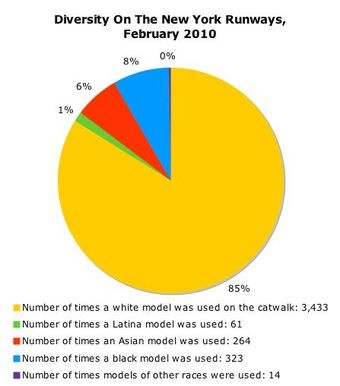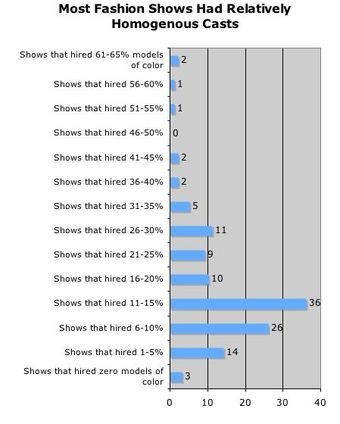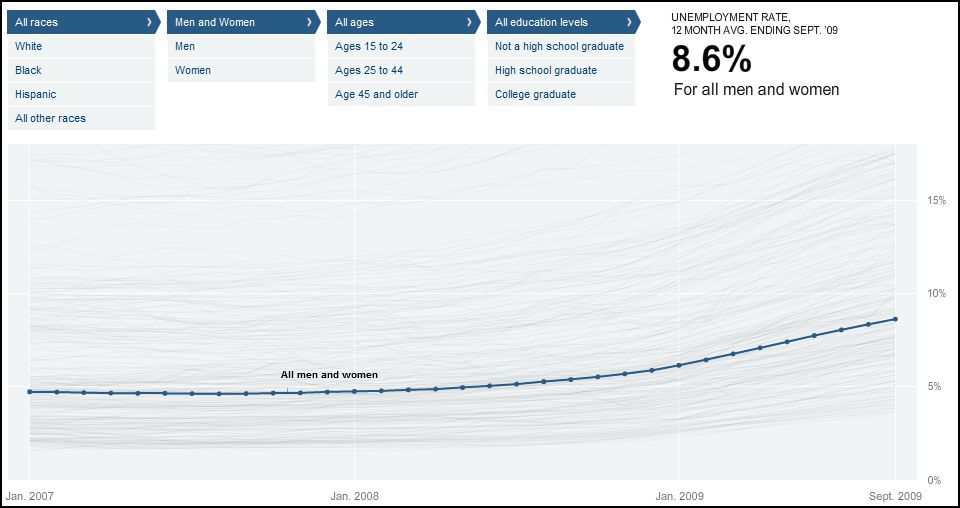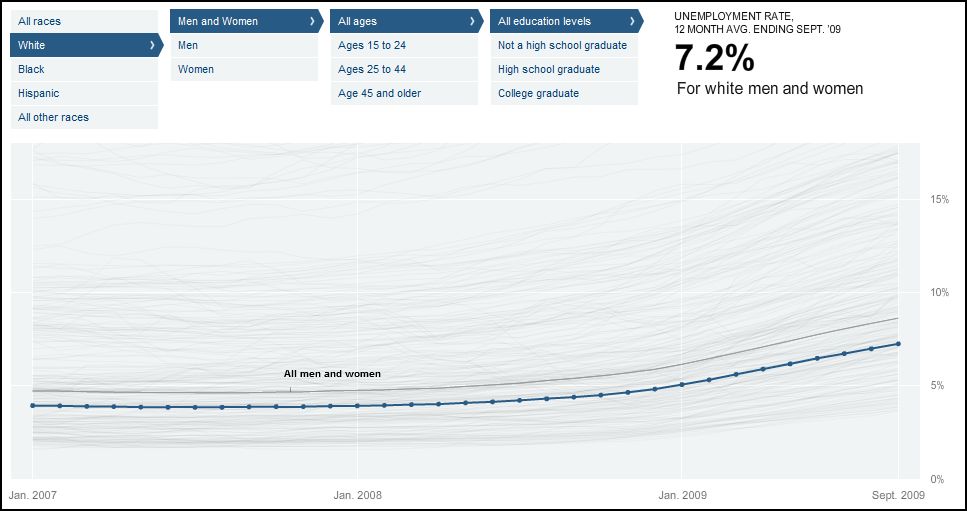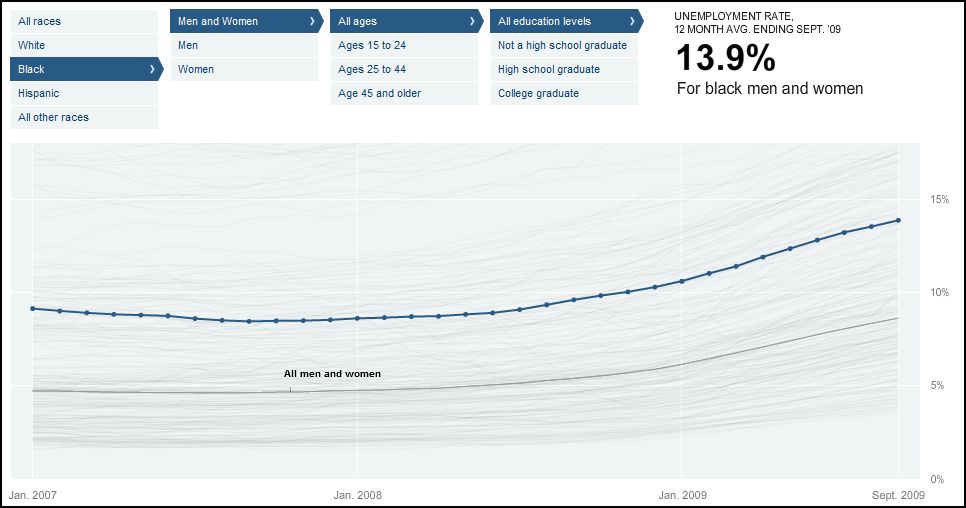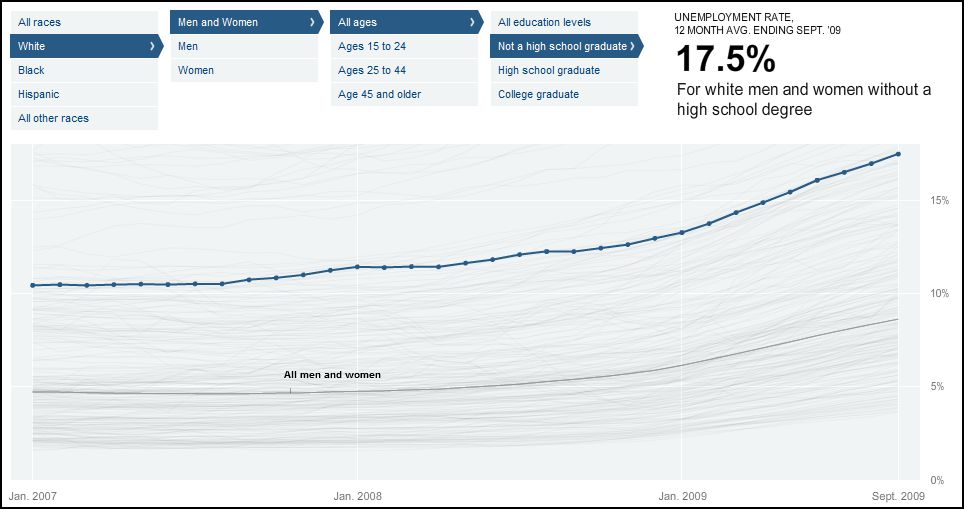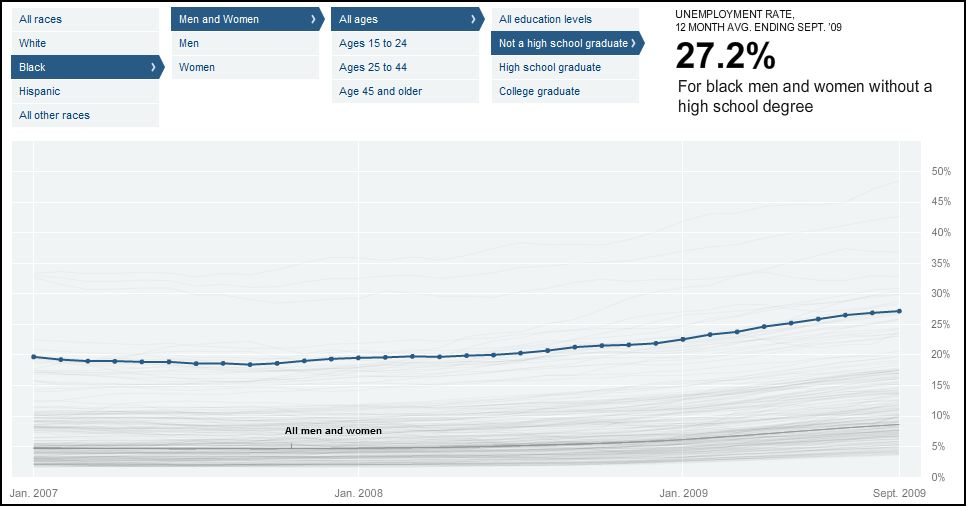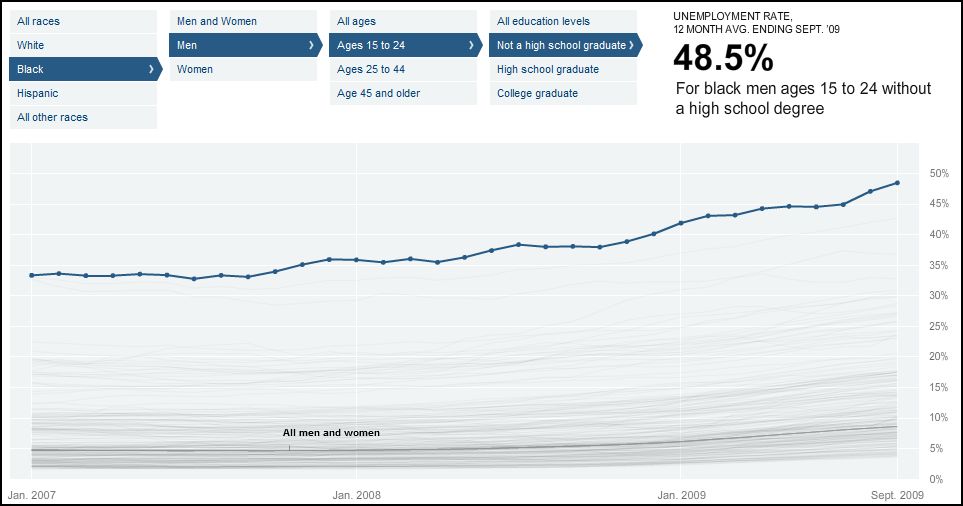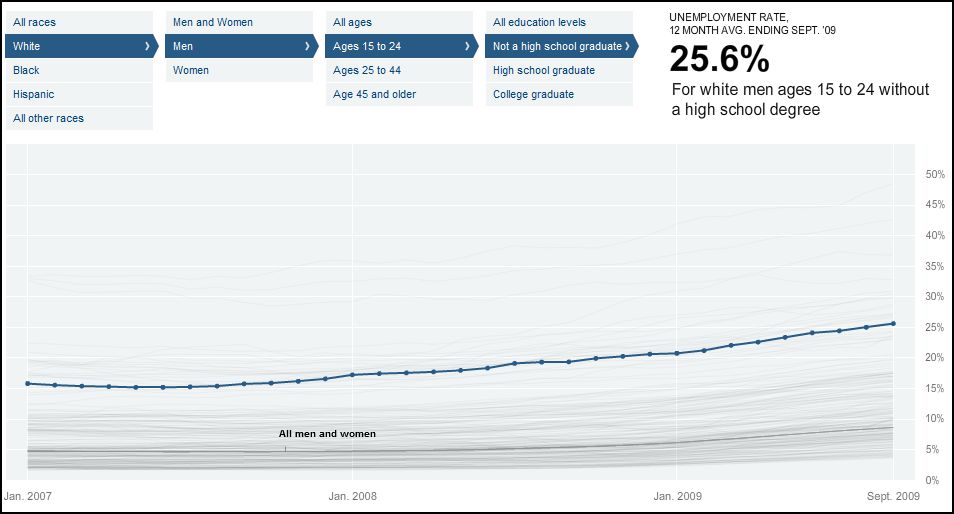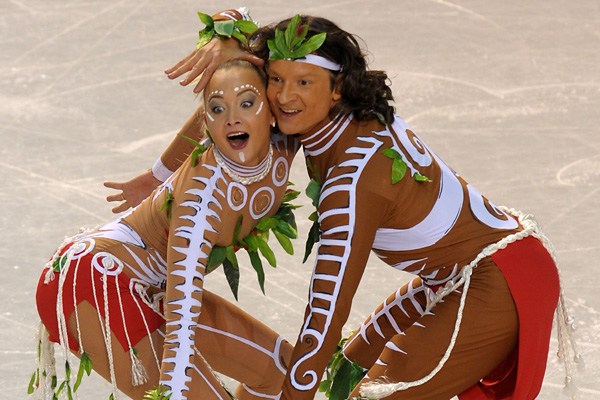Prolific sender-inner Dmitriy T.M. sent in some maps found at F.A.D. that illustrate where various agricultural items are produced. This one shows the population density of cows (pink), pigs (yellow), sheep/goats (turquoise), chickens (blue), and turkeys (green); the darker the shade of each color, the higher the density. Note that the data is broken down at the county level:

You can see a larger image here, where it’s easier to read the info at the bottom about the highest population density for each animal, per square mile: Cows = 700, pigs = 2,800, sheep/goats = 85, chickens = 75,000, turkeys = 5,500. I suspect the highest density for cattle is based on a county with a lot of feedlots, which put many more cattle in a small space than you’d see on grazing lands.
Notice the high levels of production of chickens throughout the southeast. This is a relatively new occurrence; poultry producers moved into the region due to lower wages and fewer environmental regulations compared to other areas, making it less likely their huge containment facilities would lead to a lot of opposition.
The low densities of sheep/goats are due to a few things. Most obviously, there isn’t nearly as much of a market for sheep or goat meat in the U.S. as for other meats, so they aren’t produced in large numbers. Beyond that, they’re more likely to be raised by people with a small amount of land, or even in a back yard, because they don’t need a lot of space, so you don’t have to have a lot of grazing land devoted just to them the way you do with cattle (though in the western states there certainly are very large herds).
Random bit of info: in the U.S., wool production is just a by-product of sheep meat production in most cases. I worked on a sheep ranch for a few months; they sheared their sheep just to reduce the weight the sheep had to carry around and the chance of overheating. The amount they got for the fleeces just barely covered the cost of hiring a shearing crew. The real profit was in selling the lambs for meat.
Also: you think lambs are super cute, with the jumping and baa-ing and all, but when you have to bottle-feed 40 of them twice a day, they quickly lose their allure. [Note: since commenters are already getting worked up about this being my way of justifying my brutality toward animals, I’ll just state that I’m a vegetarian, so that line of reasoning isn’t going to get you far. That is entirely irrelevant to how exhausting it got to feed lambs.]
Here we have % of land in each county devoted to corn (gold), wheat (green), soybeans (pink), cotton (blue), hay (yellow), and fruits/nuts/veggies (red):

Larger version here.
Dmitriy also sent in an image from GOOD that shows where the various elements that go into a taco in the U.S. come from, and how far they travel on average. I can’t get it large enough here to read the info on the various ingredients, but there’s a larger version here.

From the article on GOOD:
The various spices in the Adobo seasoning, for instance, had traveled a combined 15,000 miles. The avocados had traveled from Chile, home of the world’s largest avocado grower (a company that was said to produce 300 million fruit per year). The rice was imported from Thailand, despite an abundance of California-grown rice, and was packaged under an array of brand names.

